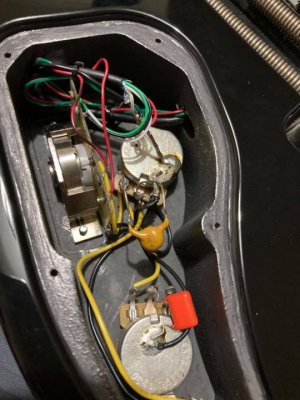No regular pot goes completely open or zero, there will always be some resistance in 0-5ohm range that will let the bleed effect to be present barely on full volume, good news is that you need to be monitoring through a studio setup to actually hear that.
Anyways, 220pF is close to 180pF, which is what PRS uses. It should not give you a very prominent bleed effect as you roll down the volume. Check whether it's not 2nF, that would give you a very thin sound as you roll down, also check if you're using 50s or modern wiring scheme. If the parallel cap+resis setup was too much on the taper then try out the series cap+resis, it doesn't widen the taper as much.
Thanks - I'll check when I'm using a real amp at volume...this has been tested on my AX8. It's definitely 220pF....perhaps I made a mistake with the 100pF....I did test lots of times, but I'll look again. As I understand it though, the smaller the value.....the higher the frequency let through....so effectively it sounds brighter...
Can you tell the wiring scheme from this photo? Btw - the dull joints were there before I started!

